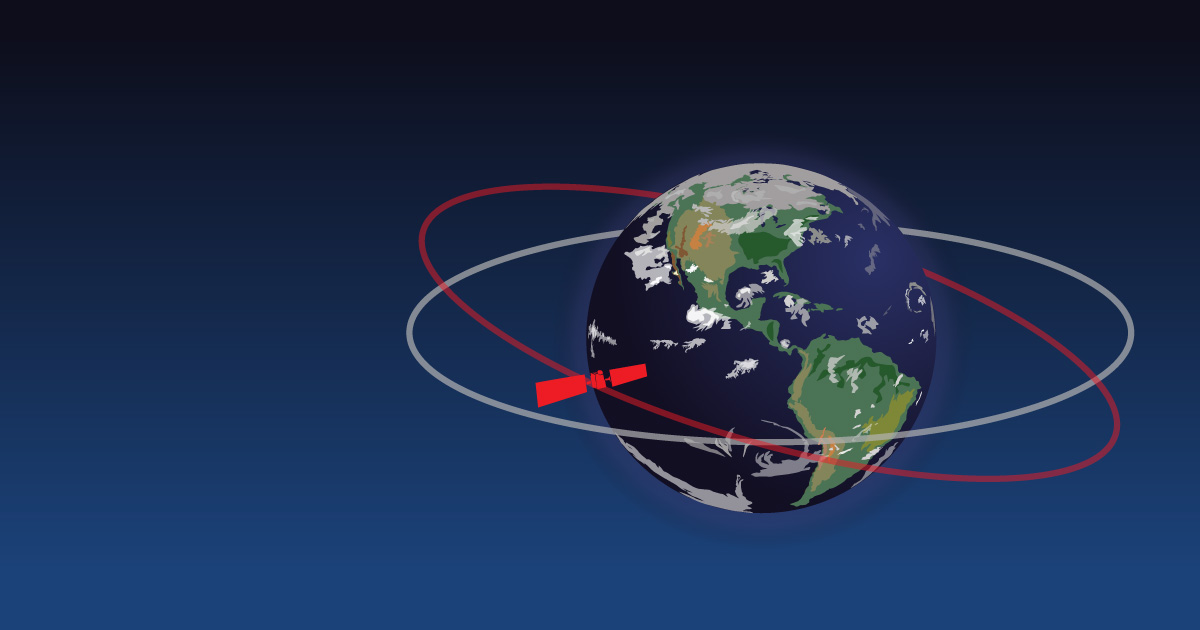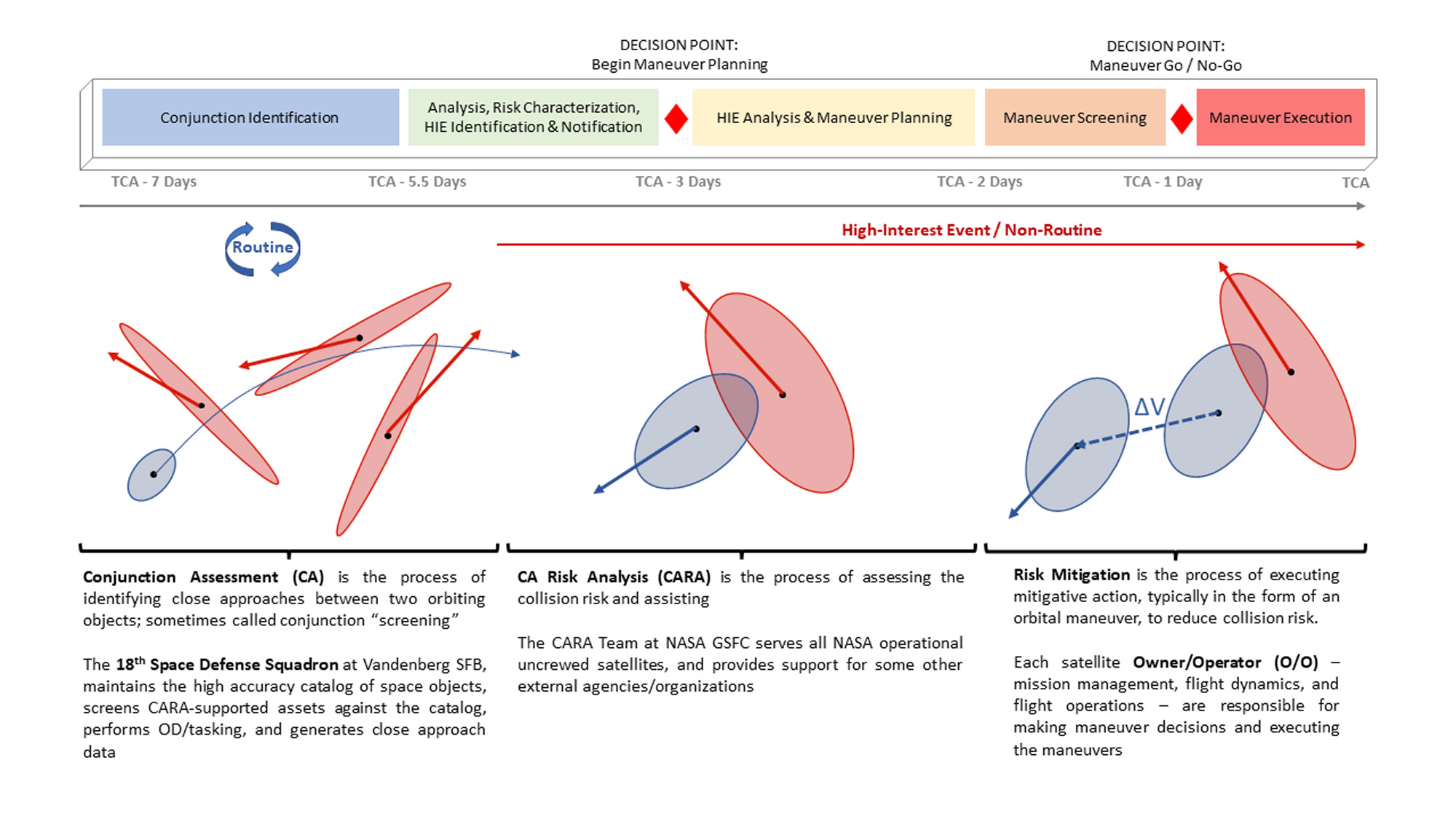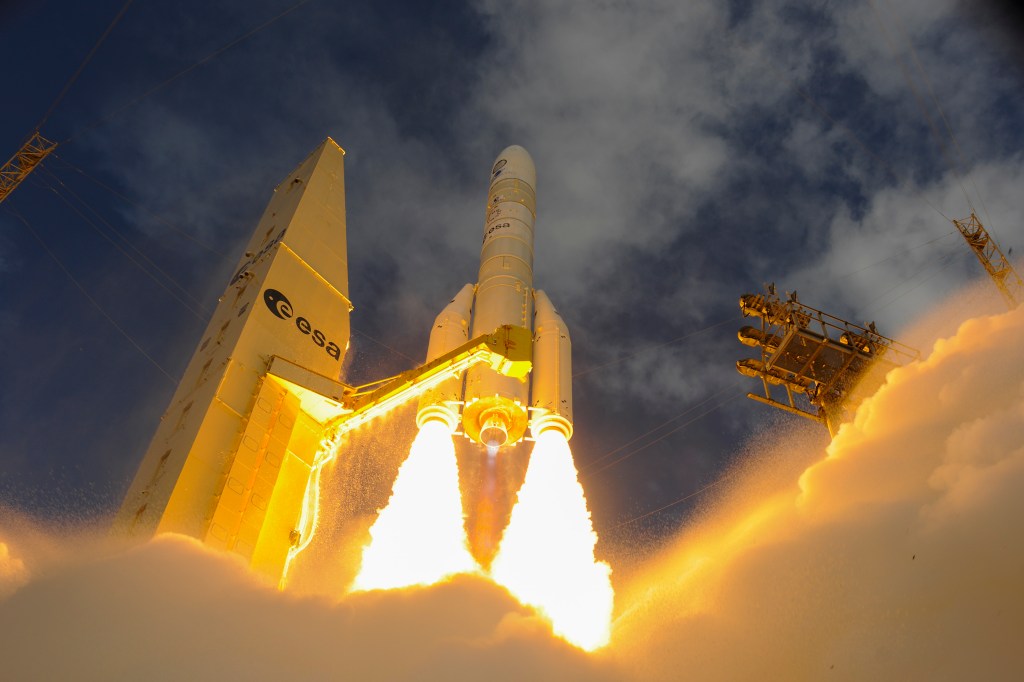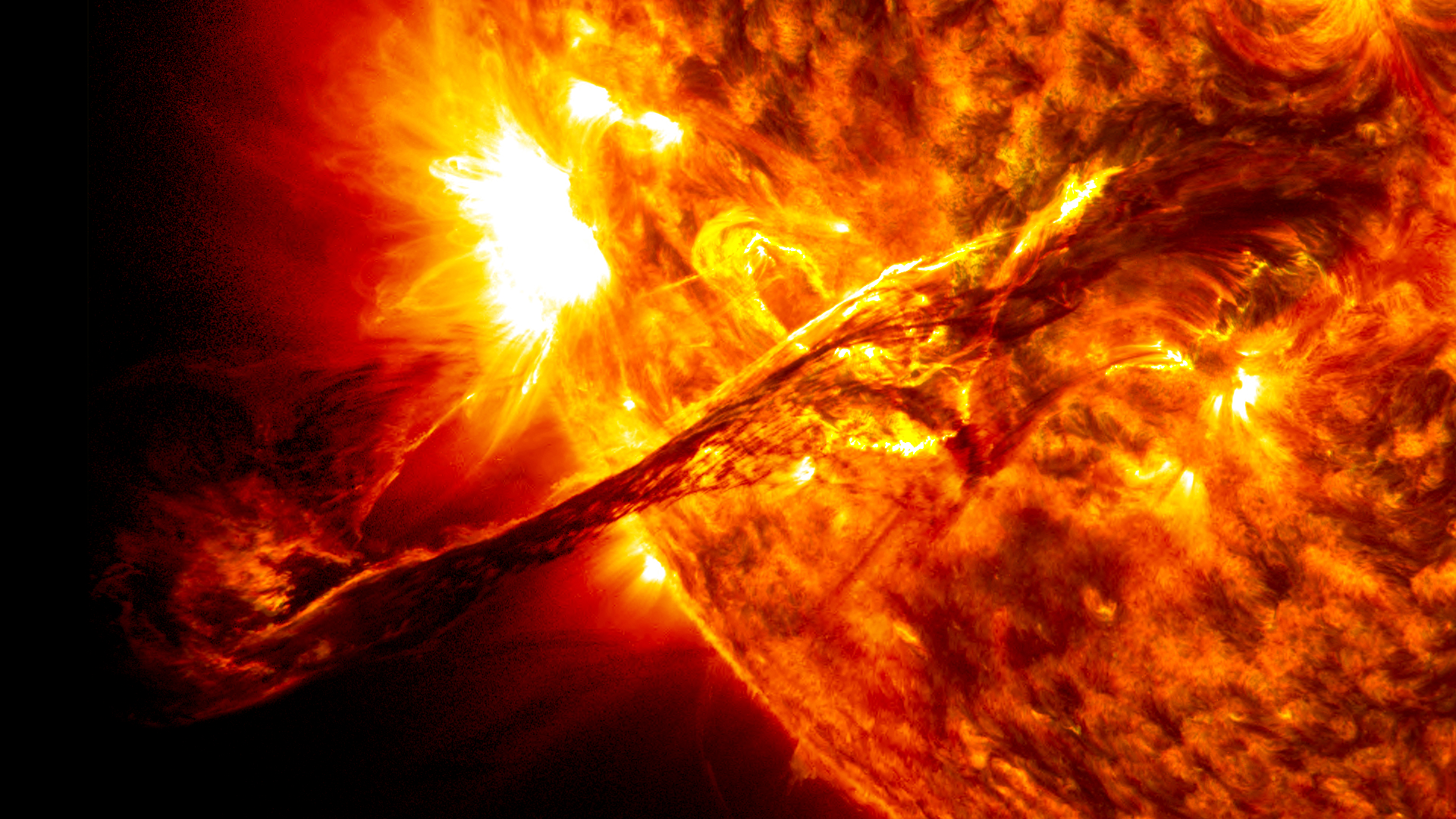NASA spacecraft not affiliated with the Human Spaceflight enterprise are required by NPR 8079.1 to utilize the CARA service for conjunction assessment screenings and risk analysis. CARA support to spacecraft is two-fold: pre-launch support and on-orbit support.
Pre-launch (and as early in the planning phase as possible), CARA assists the missions in examining conjunction assessment (CA) trade studies to select an orbit that meets mission objectives while considering safety from close approaches.
During the on-orbit phase, CARA provides conjunction analysis and mitigation services. CARA receives ephemeris and covariance data (including any planned maneuvers within the file span) from the spacecraft program/project. CARA Orbital Safety Analysts at Vandenberg Space Force Base screen the ephemerides against the catalog of tracked objects and provide CARA with data for any close approaches predicted to occur between a CARA-protected asset and any other object within a specified volume. CARA performs risk analysis on these results and shares the data and analysis results with the program/project, assisting as needed with any mitigation plan. Details of these support services are documented in a Conjunction Assessment Operations Implementation Agreement (CAOIA) between the project/program and CARA.
For Non-human space flight missions requesting CA support please reach out to the CARA team at: CARA-MissionSupport@nasa.onmicrosoft.com for the most current CAOIA and/or OCAP Templates.
CARA Process Overview
The CARA operations process is a three-step process involving the CARA Orbital Safety Analysts (OSAs) resident at the 18th SDS (Space Defense Squadron), operations facility at Vandenberg Space Force Base (VSFB), the NASA CARA team, and the mission Owner/Operator (O/O).
The first step, Conjunction Assessment (CA), is the prediction of close approaches by “screening” the trajectory of the protected asset against the High Accuracy Catalog (HAC). This step is performed by the CARA OSAs using two asset trajectories – one provided by the owner/operator (O/O) that contains any planned maneuvers during the prediction span, and the other based on non-cooperative tracking data from the DoD Space Surveillance Network (SSN) that does not have any information about upcoming maneuvers. Results of both screening runs are transferred to CARA 3x/day for LEO spacecraft and 2x/day for all others.
Step two is risk assessment. CARA has an automated tool, the Conjunction Assessment System (CAS), which processes the data and sends updated trending information to the mission customer. The CARA team then manually analyzes any conjunctions that they consider to be high risk to determine appropriate actions to be taken (i.e. Conjunction Assessment Risk Analysis).
Step three is Collision Avoidance, in which CARA works with the mission to assist with planning and execution of any risk mitigation strategies. A summary of the process is shown in Figure 3.
































